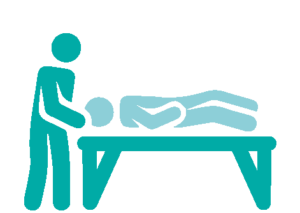How has kinesiology been developed as a healing modality?

The founding father of kinesiology was Dr George Goodheart (1918-2008) who made the discovery that muscle testing could be used to evaluate a person’s overall health. The fundamental premise of kinesiology is that the body has innate healing energy and is constantly trying to come back into balance to heal itself. Energy flows in our body can be evaluated by testing the function of our muscles, and the state of these energy flows in turn reflects the body’s overall state of structural, chemical, or emotional balance. Kinesiology is a non-invasive method, grounded in the study of anatomy and physiology, that uses muscles as monitors of stress and imbalance within the body, recognising that the flows of energy within the body not only relate to the muscles but to every tissue and organ. It thus enables the practitioner to detect and to correct imbalances that relate to stress, nutrition, learning problems and a host of other issues. Uniquely, it allows the practitioner to locate stress at very deep levels in the body.
Dr John Diamond (b. 1934) expanded kinesiology research and its scope when he started to test muscle responses to intellectual and emotional stimuli. He tested everything from music to speeches and images, recording consistent results that indicate that specific intellectual and/or emotional stimuli make the indicator muscle go weak or strong. His findings are described in detail in his classic book The Body Doesn’t Lie.
There have been many other developments paths opened in kinesiology since. Other healing modalities have been incorporated into kinesiology techniques, such as chiropractic principles, Chinese acupressure and meridians, plant medicines, chakra systems along with the latest research in neurology and neuroplasticity. Kinesiology is now a cutting-edge complementary therapy and its effectiveness has been validated in several studies.
How does kinesiology work?
In kinesiology, the energy system is understood as a single complete unit made up of different parts that all interconnect, react and effect one another. Though there are many branches of kinesiology, muscle testing (also known as muscle monitoring) is the key tool used within all kinesiology practices.
Kinesiology combines energy medicine with western techniques and is a natural and immensely powerful healing modality. It incorporates techniques such as acupressure points, meridian balancing, gentle structural manipulation and massage, and vibrational alignment. The therapy involves muscle testing which identifies current stressors to the body/mind by accessing the body’s understanding of itself through biofeedback. It works to balance the subject, on a mental, emotional and energetical level, by identifying the underlying cause of imbalances. The muscle response identifies where there is an energy imbalance and techniques can then be used to restore the natural flow of energy and thereby facilitate self-healing within the body.

Kinesiology can access the stored patterns, issues and traumas retained in the physical body because all experiences — mental, emotional, and physical — are held in the energy field of the body. It can identify the point of stress, the underlying cause, and once addressed it helps realign the body to its own innate sense of order and healing (a bit like going back to a restore point in a computer). At this stage, the body can tap into its own healing capacity to restore itself to health.
Just as hypnosis can bypass the conscious mind and find answers and information directly from the subconscious, so the method of muscle testing is a way of bypassing logic/reasoning to identify answers directly from the body’s innate knowledge of itself.
Kinesiology taps into the dis-ease created in the body over time through compensatory and defence patterns to reveal the stressors and patterns that are affecting health and well-being in all aspects. As the stress is released from the body, the method supports it to function thereafter at its optimum; this includes immune system function, brain function, digestive function, hormonal balance, emotional modulation and many other functions of the body.
The key to the effectiveness of kinesiology is the way it can access unconscious and subconscious sabotages that affect your ability to enjoy optimum health and wellbeing. It delivers a process to peel off layers of stress and conditioning that will have adversely affected the body’s function over many years. Kinesiology supports the body to release such negative patterns and create new neurological pathways and healthier behavioural patterns, and by aligning the body’s conscious and subconscious, it supports it to function at its fullest potential.

